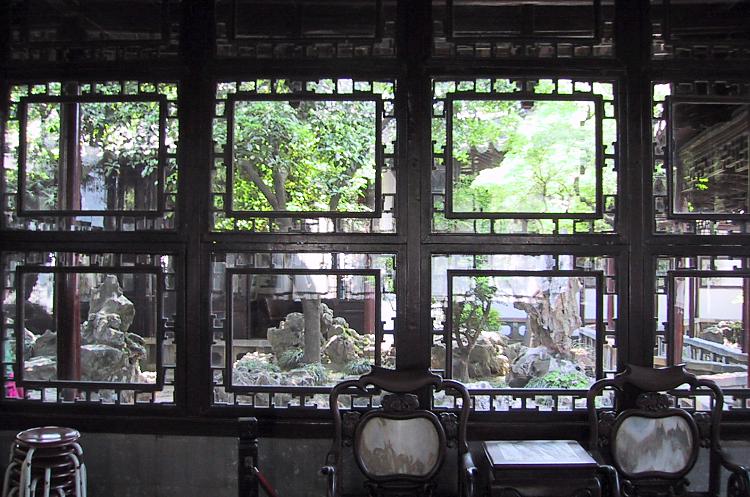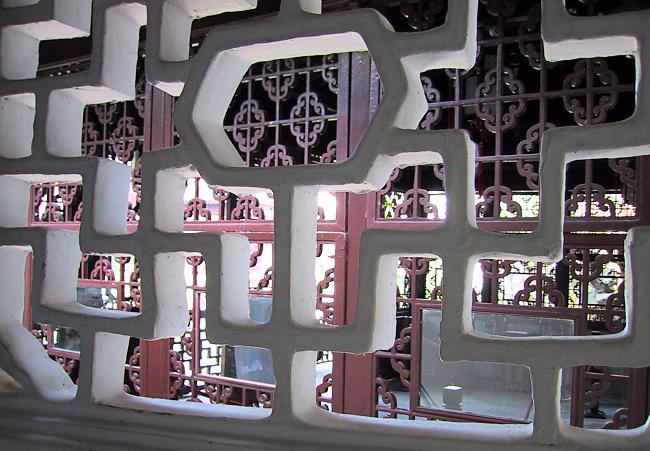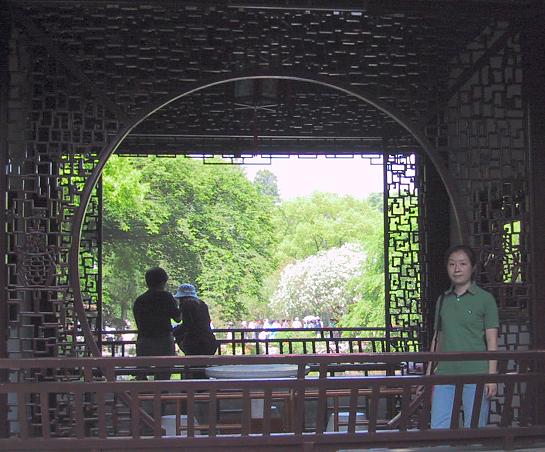
"Above there is heaven and below there is Suzhou and Hangzhou." Suzhou has existed for more than 2000 years and was a center of trade and silk weaving for more than 900 years starting in the 10th century when the newly opened Grand Canal linked the Yangtze River delta with Beijing. The Water Gate at the east end connects Suzhou's canals to the southern end of the Grand Canal.
Suzhou is a city with many beautiful gardens. Portland's Chinese garden was designed but the Suzhou Garden Design Institute. The buildings were built in Suzhou, then disassembled and shipped to Portland.
This is the "Humble Administrator's Garden". It is a very large (nearly 52,000 square meters or 13 acres) and very beautiful garden - the largest in Suzhou. Believe it or not, I greatly trimmed down the pictures of this garden to get down to this rather large number.
This garden was built around 1509AD during the Ming Dynasty by the imperial inspector. He was tired of official life and wanted a garden to retire to. He got the name for the garden from an essay called "To cultivate my garden and sell my vegetable crop is the policy of humble man".
A lake in the center occupies about one fifth of the space with many streams and hills throughout. The garden is divided into the middle, eastern and western parts and a house is at the south end of the garden. Some of the spaces in the garden are: the Hall of Drifting Fragrance, the Loquat Garden Court, the Peony Pavilion, the Listening to the Sound of Rain Pavilion, the A Pure Mind Thinks Deep area, the Magnolia Hall, the Orange Pavilion, the Hall of 36 Pairs of Mandarin Ducks, the Hall of 18 Camellias, the With Whom Shall I Sit? Pavilion, the Stay-and-Listen Pavilion, the Pagoda Reflection Pavilion, the Far Away Looking Pavilion and many more.
Many of the areas are named for lotus blossoms. Growing in mud, lotus blooms
still keep themselves pure and clean.The farther their smell drifts the more
pure it becomes. The lotus is often called "a true person of virtue among
flowers." The theme of the garden is to be as pure as a lotus blossoms.


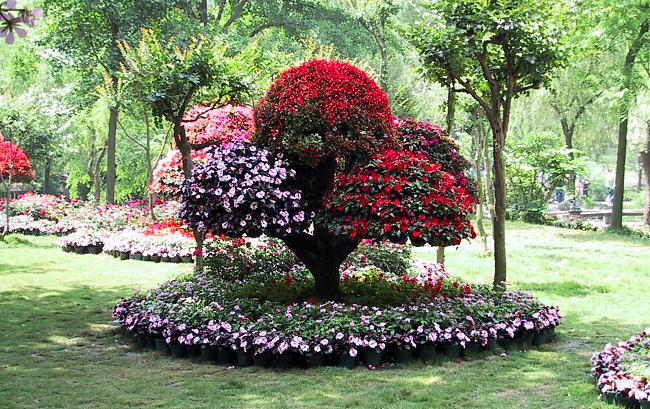
A Pengjin (Bonsai) Exhibit. (Just one of more than 700 in the garden.)

There was also a fish exhibit.

These white fish which looked like they were wearing red hats caught my eye.
The type of fish is printed below.
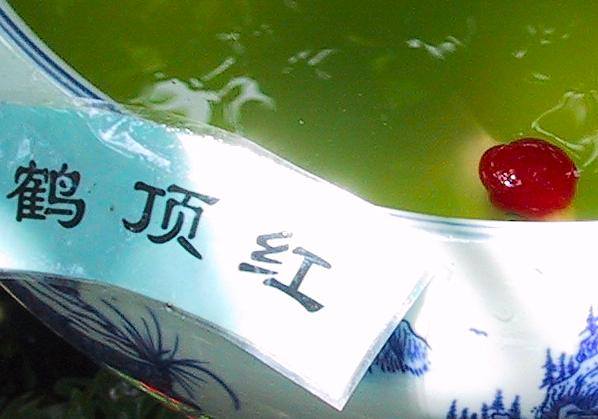

A series of windows and openings designed to provide ever changing views
in a "small" space.
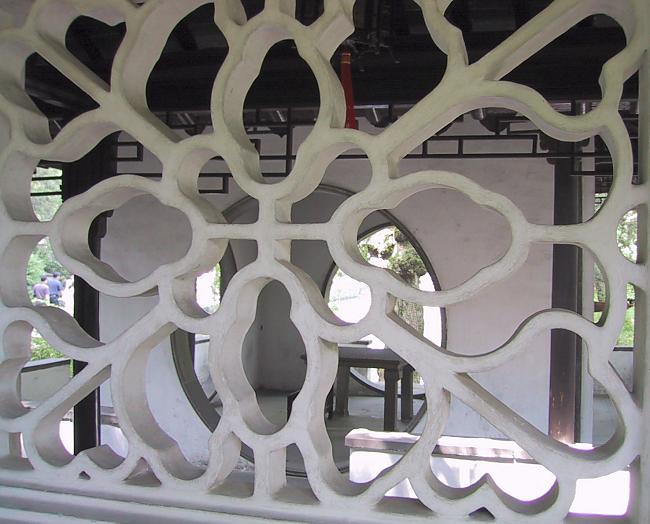
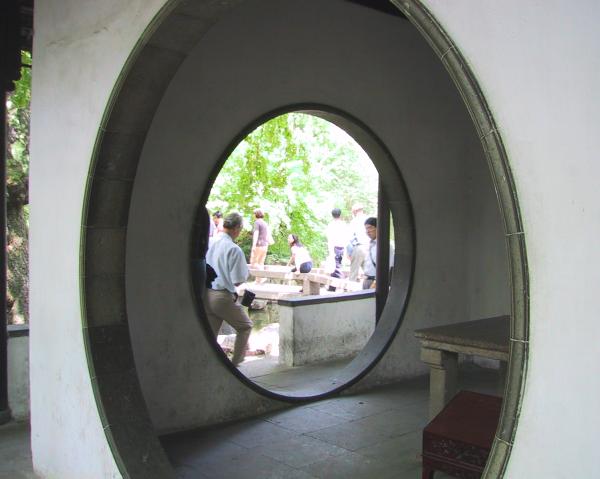
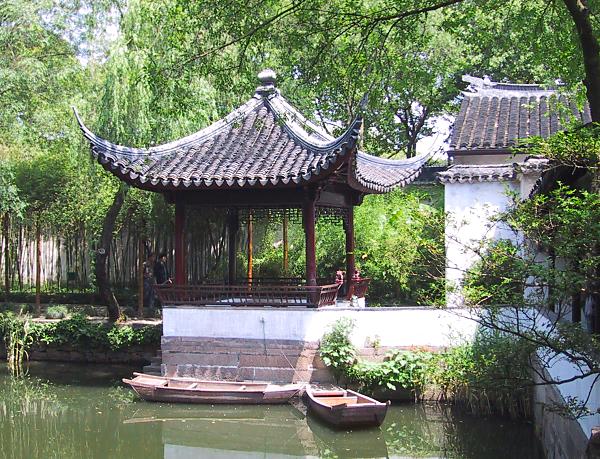
This building is designed in the shape of a boat.
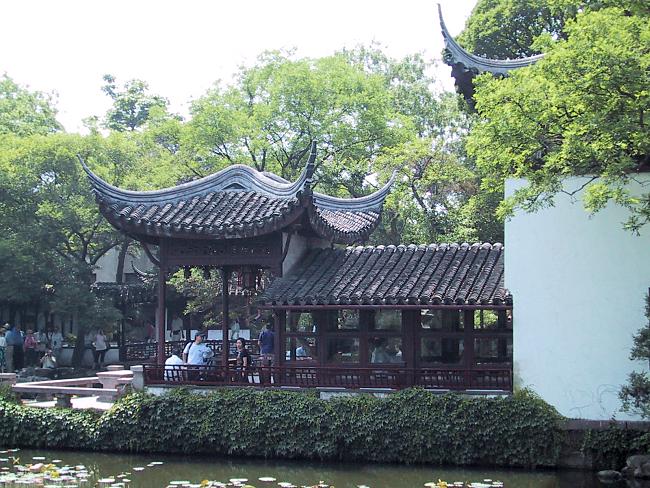
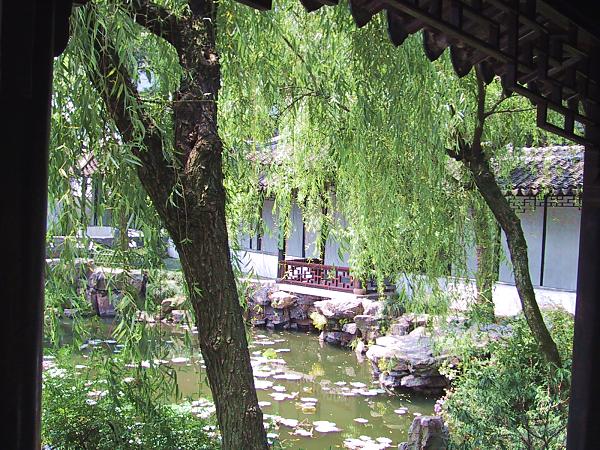
The zigzagging bridges also help to provide ever changing views and they
slow your travel through the garden.


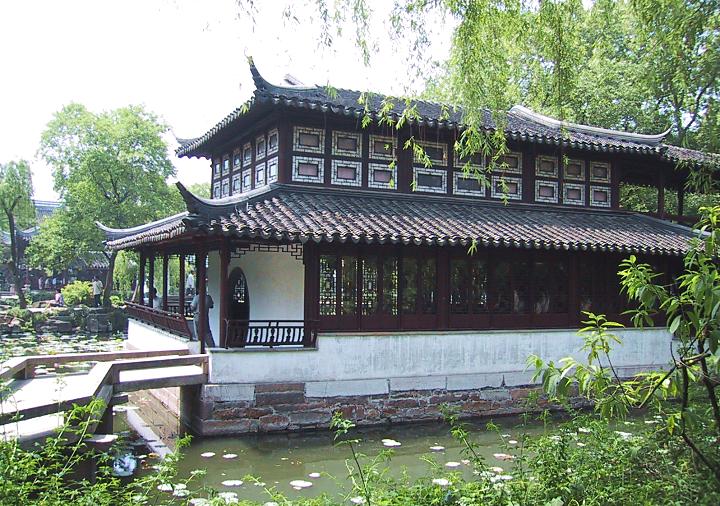
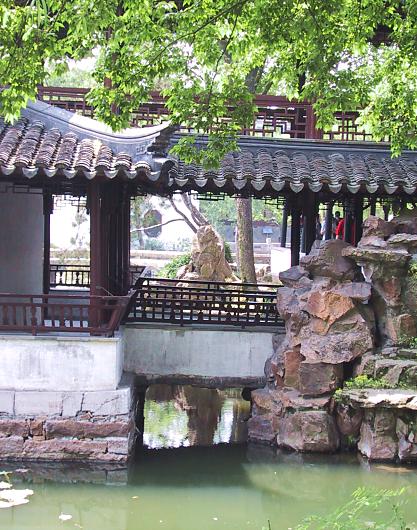
Notice how each window is different.
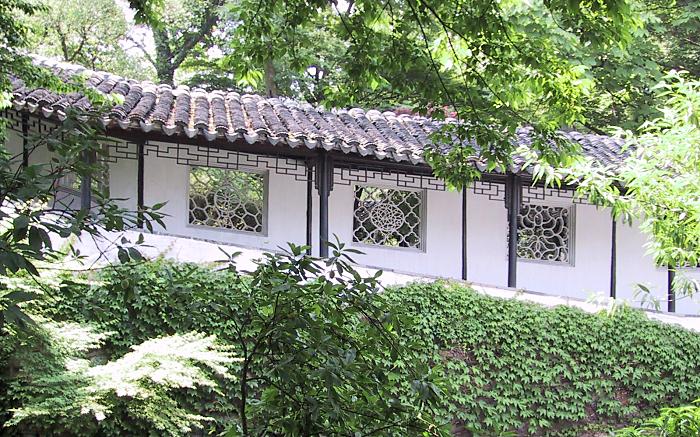


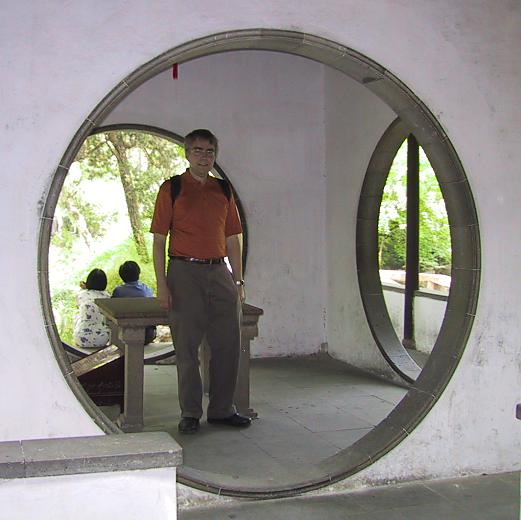
A southeast Asian tour group.

A small lotus blossom.

Nice Ming Dynasty furniture.
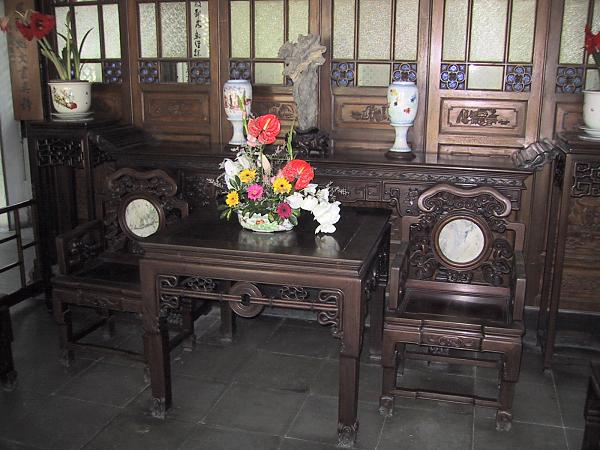
Another window that frames the garden like a painting. I snuck this picture
of Maggie.
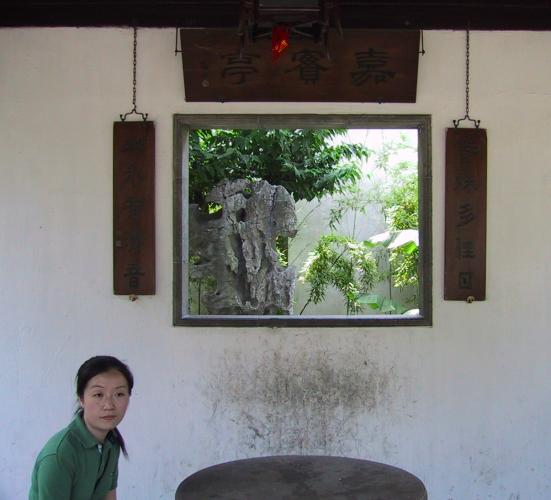
So she took one of me.
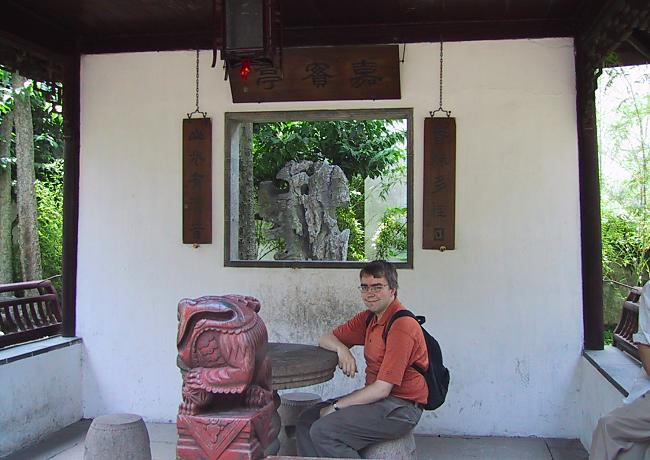
A very impressive jade sculpture.
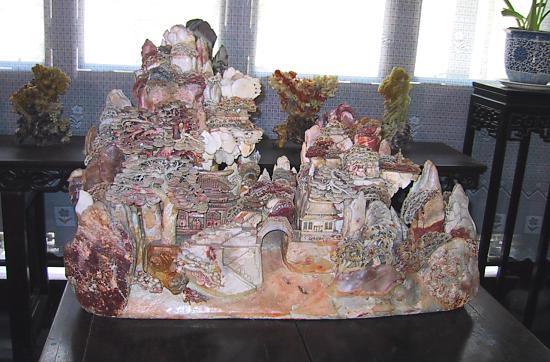
This is natural stone. The stone was cut and the scene was found and
framed.


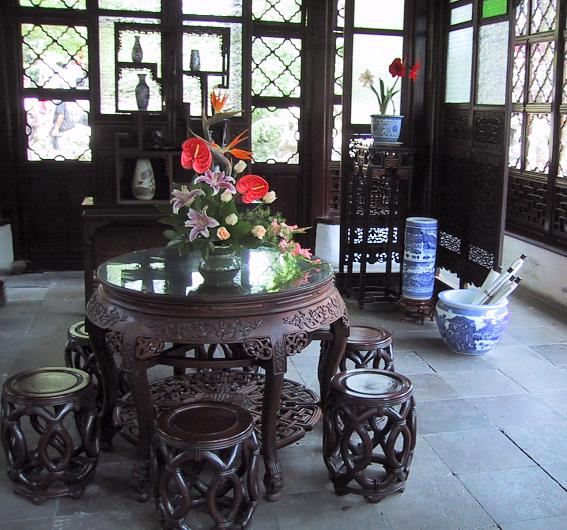
Maggie spotted this woodwork.
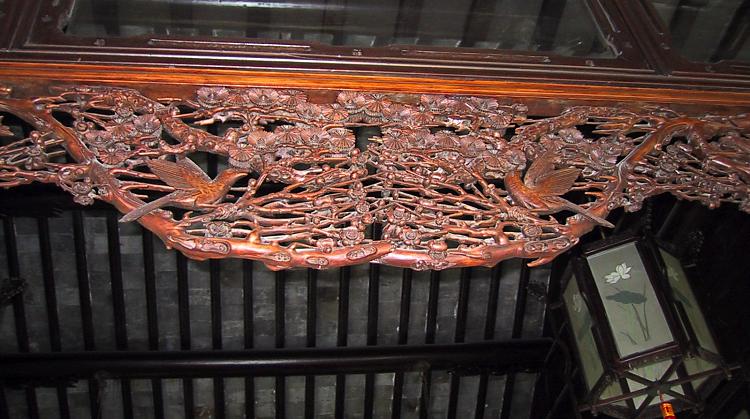
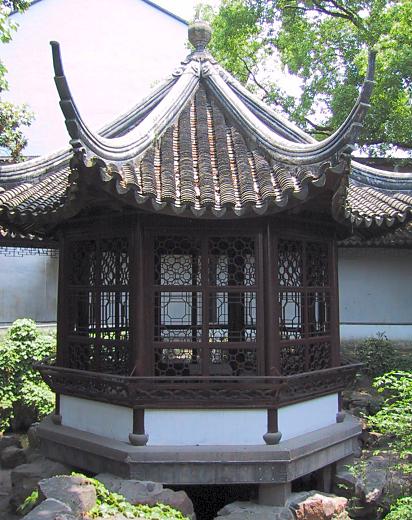
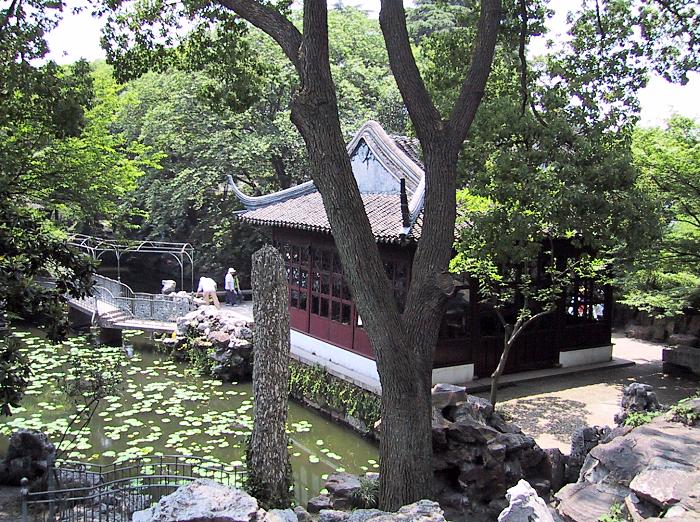
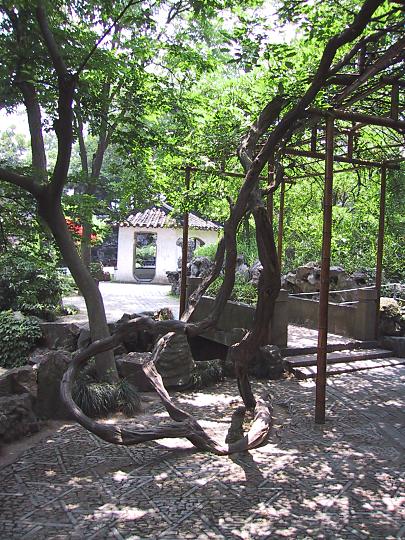

Maggie had figured out that I was fascinated by Chinese tile roofs so she
took this picture for me.
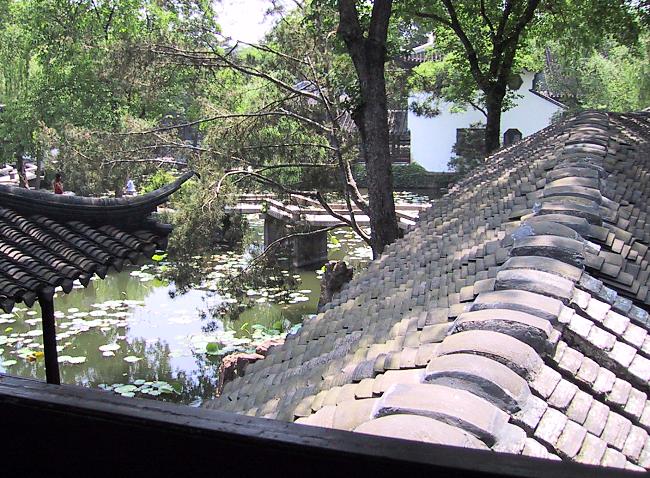
This view was designed around the Pagoda of Paying Debts about a kilometer
behind Maggie. The pagoda is mirrored in the lake in a garden technique is
called "borrowed view from afar".
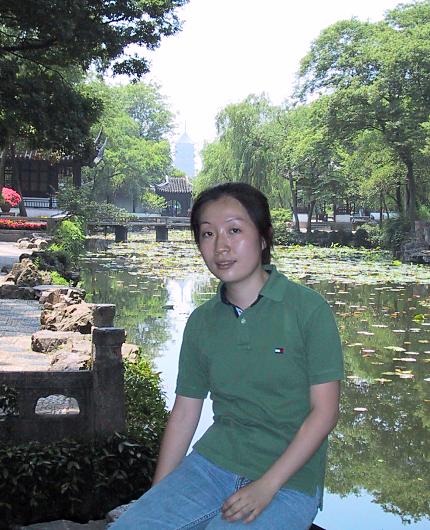
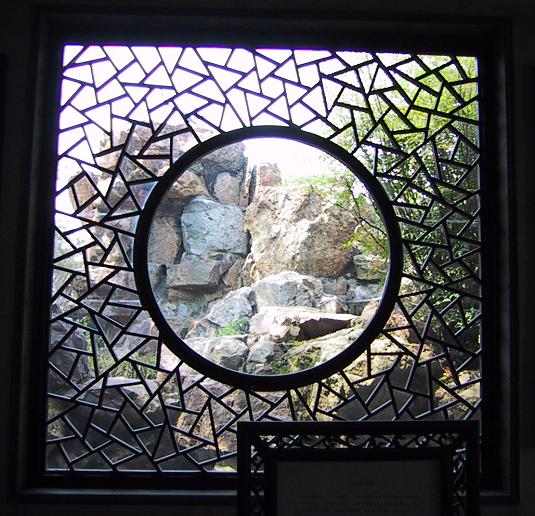
These almost look like separate paintings.
